New perk: Easily find new routes and hidden gems, upcoming running events, and more near you. Your weekly Local Running Newsletter has everything you need to lace up! Subscribe today.
Knees are particularly susceptible to wear and tear because they’re inherently unstable. You’ve got muscles that move them, but these muscles don’t do a very good job of stabilizing them—which is problematic because a balance of mobility and stability is critical for optimal function.
Ultimately, the health of your knees depends largely on good joint alignment and balanced strength and flexibility in the hips. Maintenance in these areas will take some work, but it’s worth the effort.
Hit Reset to Save Your Knees
Problem: Unstable Knees Are Injury-Prone
Muscles are designed to both move joints and keep them stable. Ligaments, tendons, and other soft tissue are there to attach things and help out. Because the knee joint relies heavily on ligaments for stability, it is particularly vulnerable to injury. This becomes super-risky when you start racing around without paying attention to joint alignment. For example, if your knees aren’t tracking forward over your ankles, they’re not aligned optimally and as a result will be less stable, which increases your injury risk. The same is true if you’re a chronic knee-locker—your joints are unstable, and you will continue to increase that instability (and become more injury-prone) over time.
Solution: Align Your Stride
Luckily, whether you realize it or not, the basic lunge is one of your most fundamental movements in sports and in life—it’s basically what you do when you walk and run—and mastering it is key for preventing injuries. Practicing variations on this classic pose will help you create optimal alignment, stabilize your joints, and increase fluidity in the surrounding muscles so that they don’t pull your knees out of their happy medium.
Benefits
- Increase hip and hamstring flexibility
- Improve knee, hip, and ankle stability
- Improve awareness of proper alignment
- Help prevent knee strain and compensation injuries
Before You Begin the Lunges, Take This Self-Test:
How’s your form?
Use this assessment to gain clarity about your biomechanics. Remember, it’s very likely that whatever happens when you lunge is also happening when you walk and run.
Try it: Step one leg back into a lunge. Once you feel relatively stable, notice your alignment tendencies, especially what’s going on in your hip, knee, ankle, and foot:
- Is your knee collapsing toward the center?
- Is your knee flopping to the side?
- Is your knee over your ankle?
- Is the inner arch of your foot collapsed?
- Are your toes gripping the floor?
Incorrect alignment:
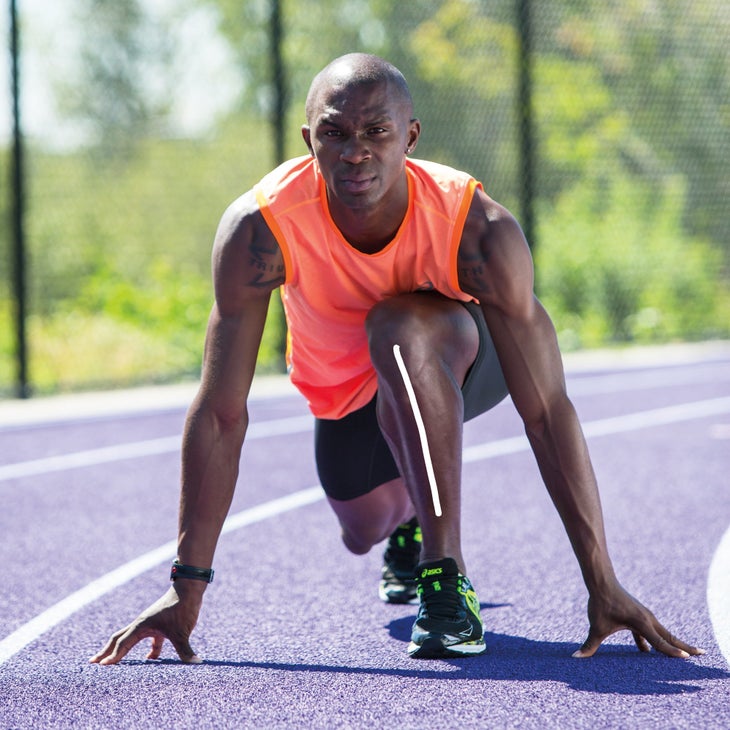
Correct Your Form
Here are some key alignment points to ensure solid form when you practice lunge variations, whether on your yoga mat, in the weight room, or during drills on the track.
- Put blocks under your hands if you’re straining to reach the floor.
- Press down evenly through your front foot—don’t grip the floor with your toes.
- Make sure your knee is tracking over your ankle, not flopping to the right or left.
- If it’s hard to get your foot all the way under your knee, grab that ankle with your hand and pull the foot all the way up there.
- Gently hug the knees toward each other—maintain the integrity of the lunge by keeping everything stable rather than just hanging out (and letting your hips sag toward the floor).
Correct alignment:
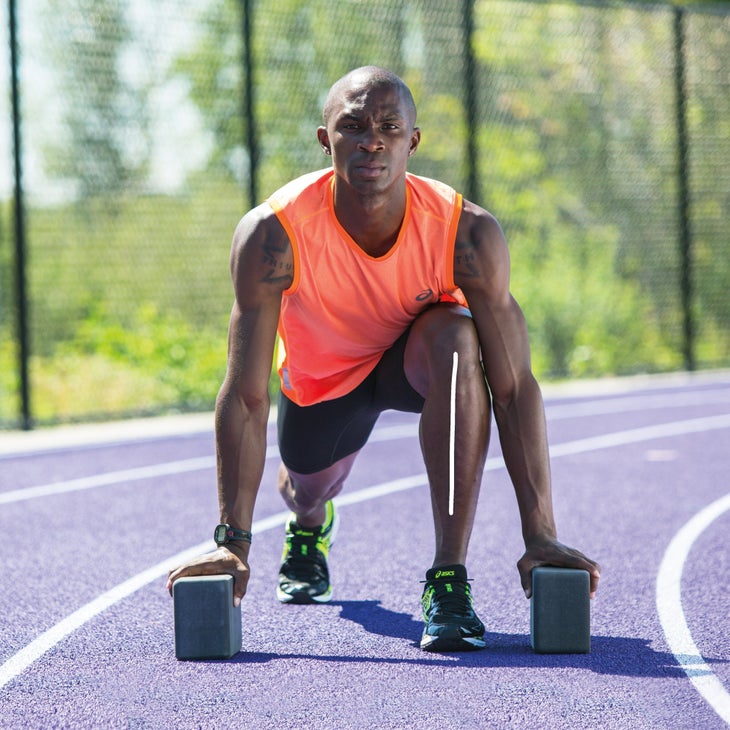
Technique
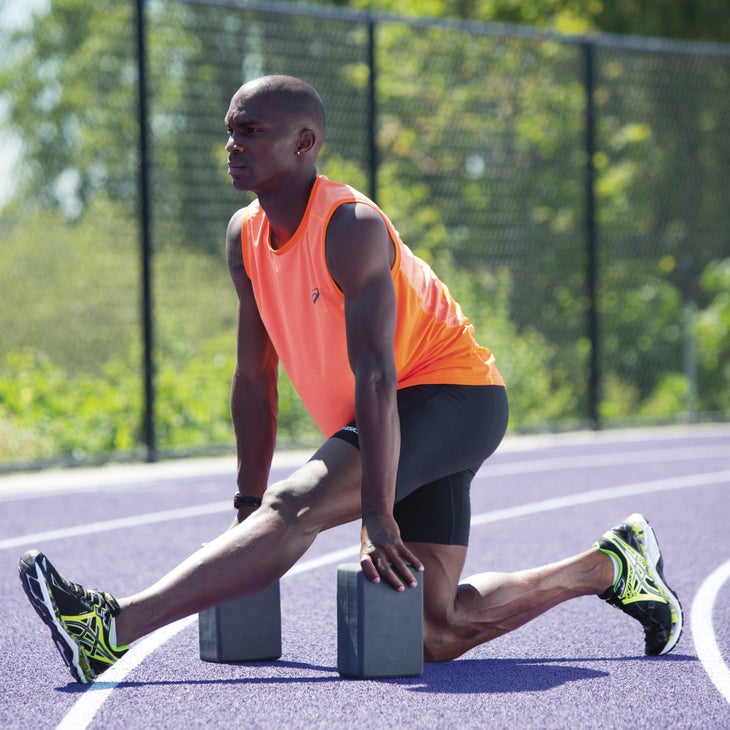
Remember, the floor isn’t the goal—there’s nothing down there for you! There’s no point in straining to reach the floor, because your body will compensate in all kinds of funky ways when you force it. If you can’t easily reach the floor, bring the floor up to meet you using blocks, water bottles, or whatever props you have handy.
Red Flags
- Poor foot alignment
- Knee tracking issues
- Spinal compensation
- Knee injuries
Align Your Stride: The Movements
Do this routine pre-workout or as crosstraining. Hold for 5 to 8 breaths or 10+ reps/multiple sets for each movement.
Do the following movements first on one side, then pause to feel the difference before repeating the full routine on your other side.
Low Lunge
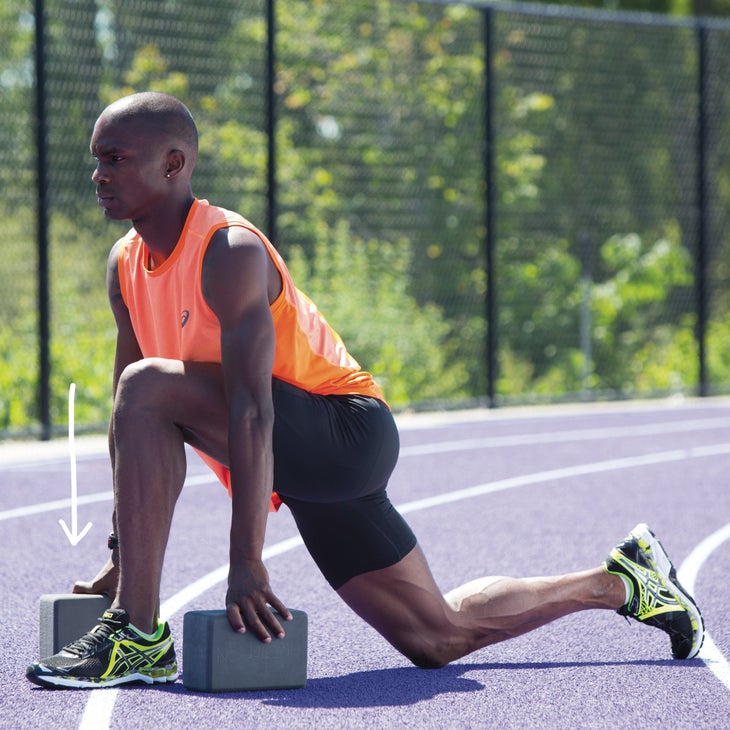
- Step one leg back into a lunge and lower your back knee to the floor—pad your knee if needed.
- Frame your front foot with your hands—place props beneath your hands if needed.
- Pick up your back knee, pull it back another inch, and return the knee to the floor, encouraging your stride to lengthen.
Runner’s Lunge
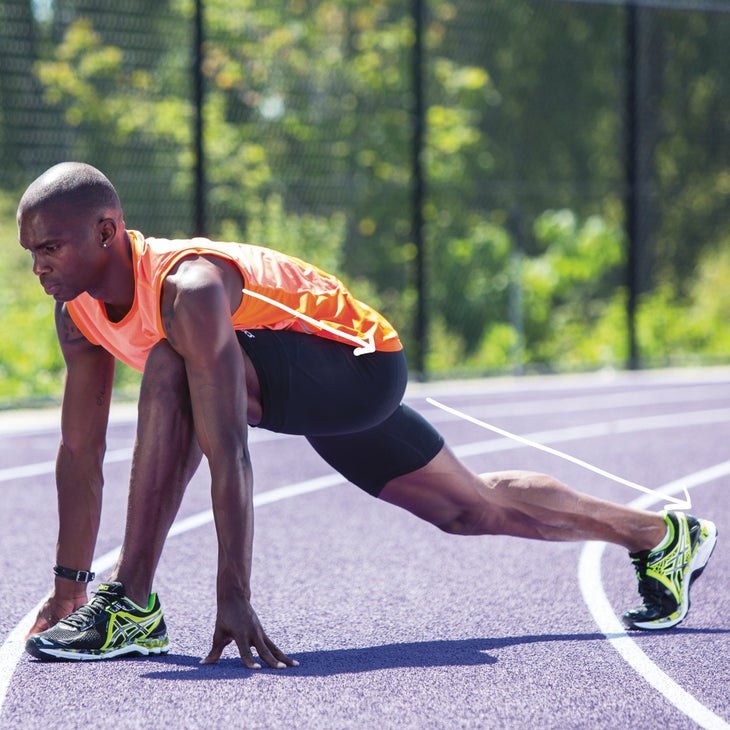
- Step one leg back into a lunge and frame your front foot with your hands.
- Keep your back knee lifted and engage that leg to make it as straight and active as possible.
- Keep your spine as neutral as possible, rather than side bending—make sure your front-legside waist hasn’t shortened.
Crescent Lunge
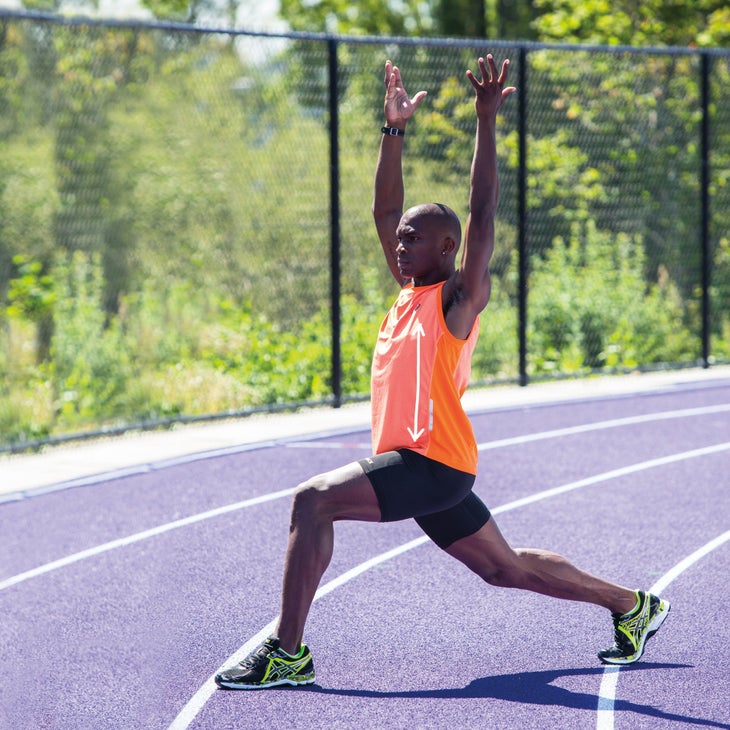
- Set up Runner’s Lunge.
- Once you feel stable, reach your arms overhead, facing the pinky sides of your hands toward each other.
- Engage your core to lengthen your spine and make it perpendicular to the floor.
Half Split
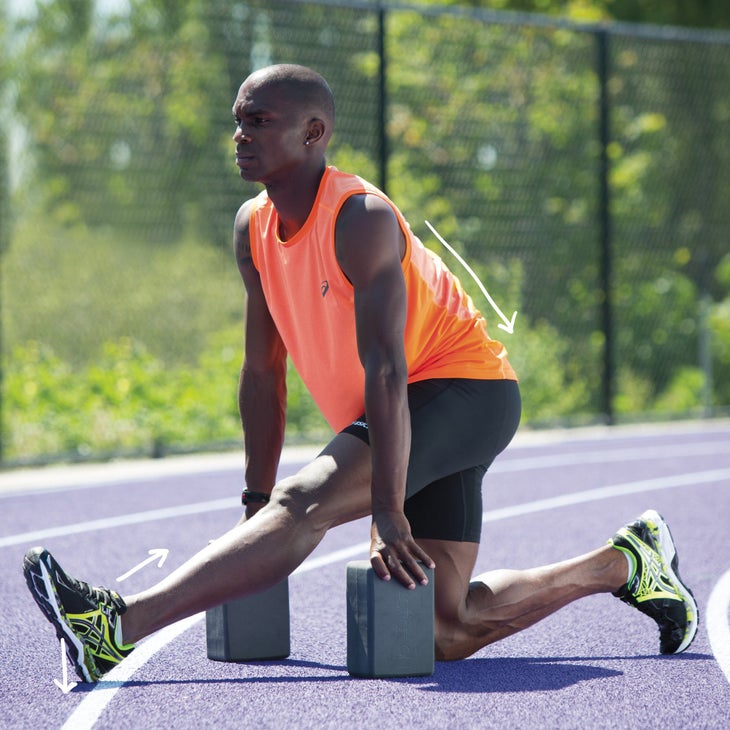
- From Low Lunge, straighten your front leg as much as you can without locking the knee, walking your hands back as much as necessary.
- Flex your front foot so that the toes point up.
- Dig your front heel into the floor and move the hip of that leg back, away from your shoulder on that side—it’s kind of like your heel is stuck but you’re trying to drag it toward you.
- Keep your spine long (rather than hunching down over the straight leg)—engaging your core will help.
Half Split Rotation
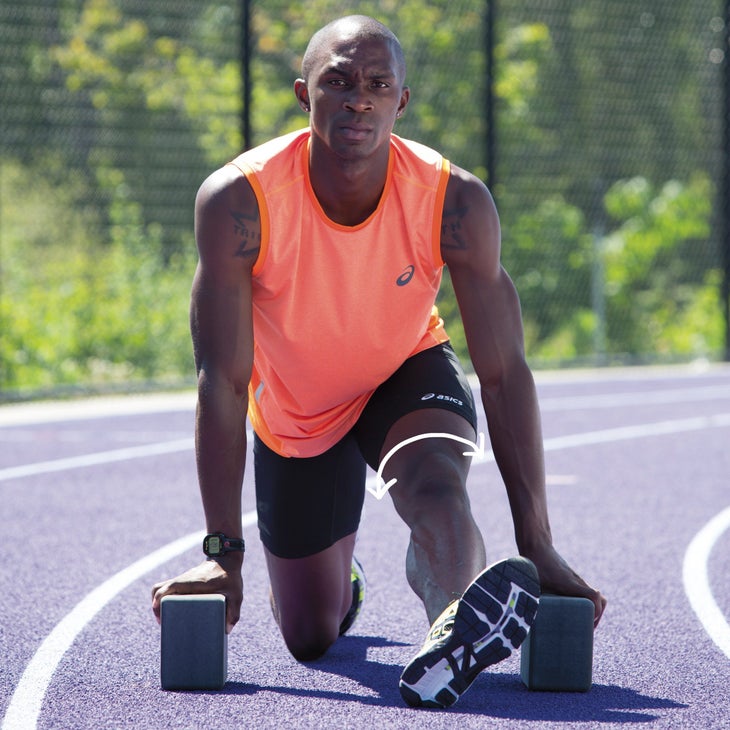
- From Half Split, turn out your thigh in your hip joint.
- Turn in your thigh in your hip joint.
- Continue, feeling the natural stopping point, aka the end of your hip range of motion, and then rotate back in the other direction, using the muscles in your hip to steer the movement rather than just turning your foot.
Lunge Flow
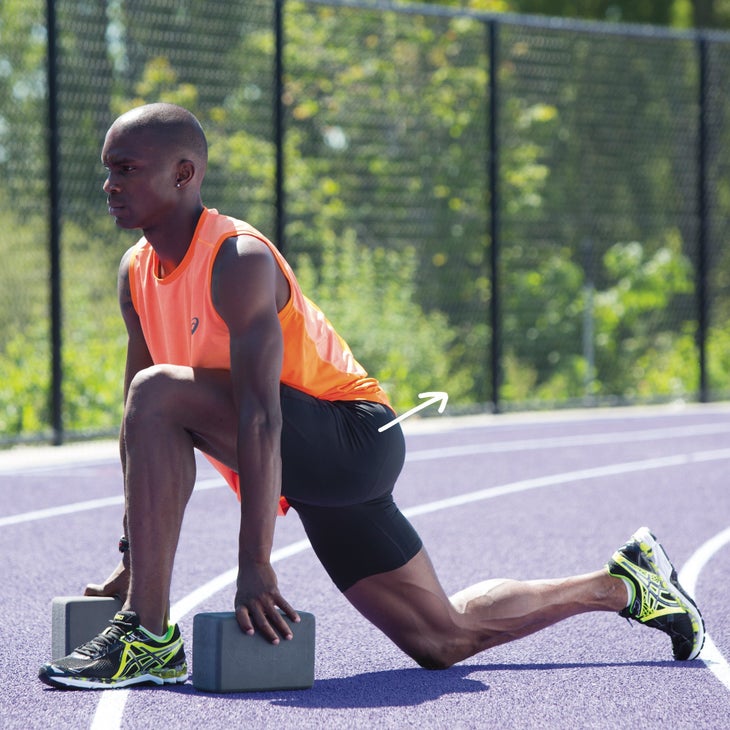
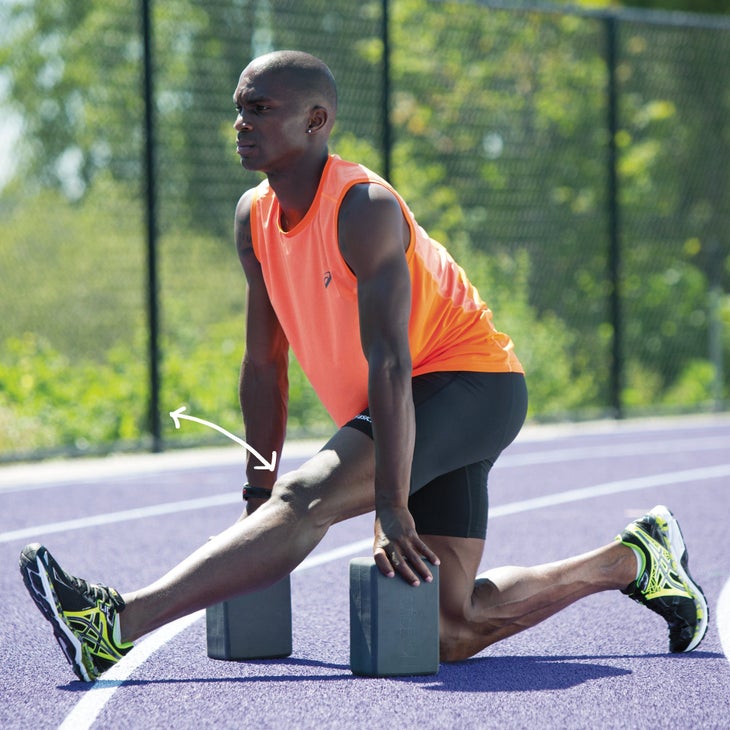
- From Low Lunge, lengthen your front leg into Half Split, flexing your foot and keeping your spine long.
- Continue, moving forward and backward.
Lizard
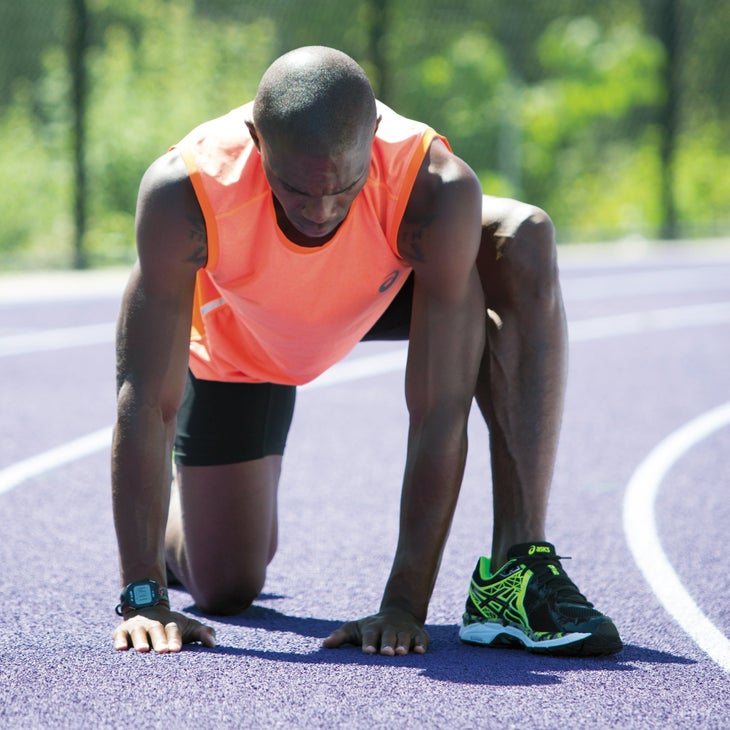
- From Low Lunge, move your front foot over to the side, away from the center of your body, and turn out your thigh.
- Rest your hands on the floor beneath your chest.
Lizard Flow
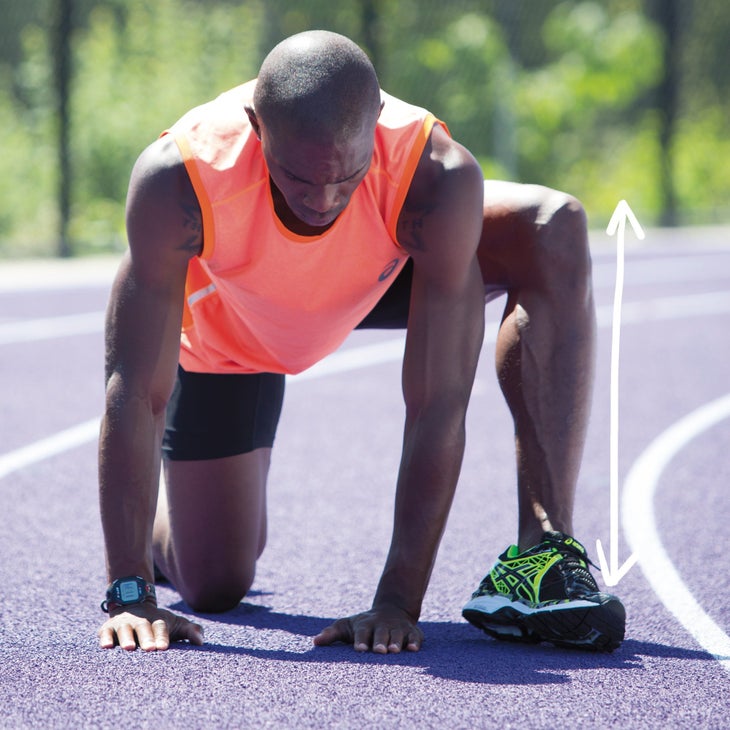
- From Lizard, rock toward the outside edge of your front foot—your leg will move a few inches away from your body.
- Bring your leg back in toward your body, returning the foot flat to the floor.
- Continue, steering from your hip so that your knee/ankle/foot are all tracking together, in alignment.
Pause and feel the difference between sides before doing the routine on your other side, beginning with Low Lunge.
Republished from Hit Reset: Revolutionary Yoga for Athletes by Erin Taylor with permission of VeloPress.